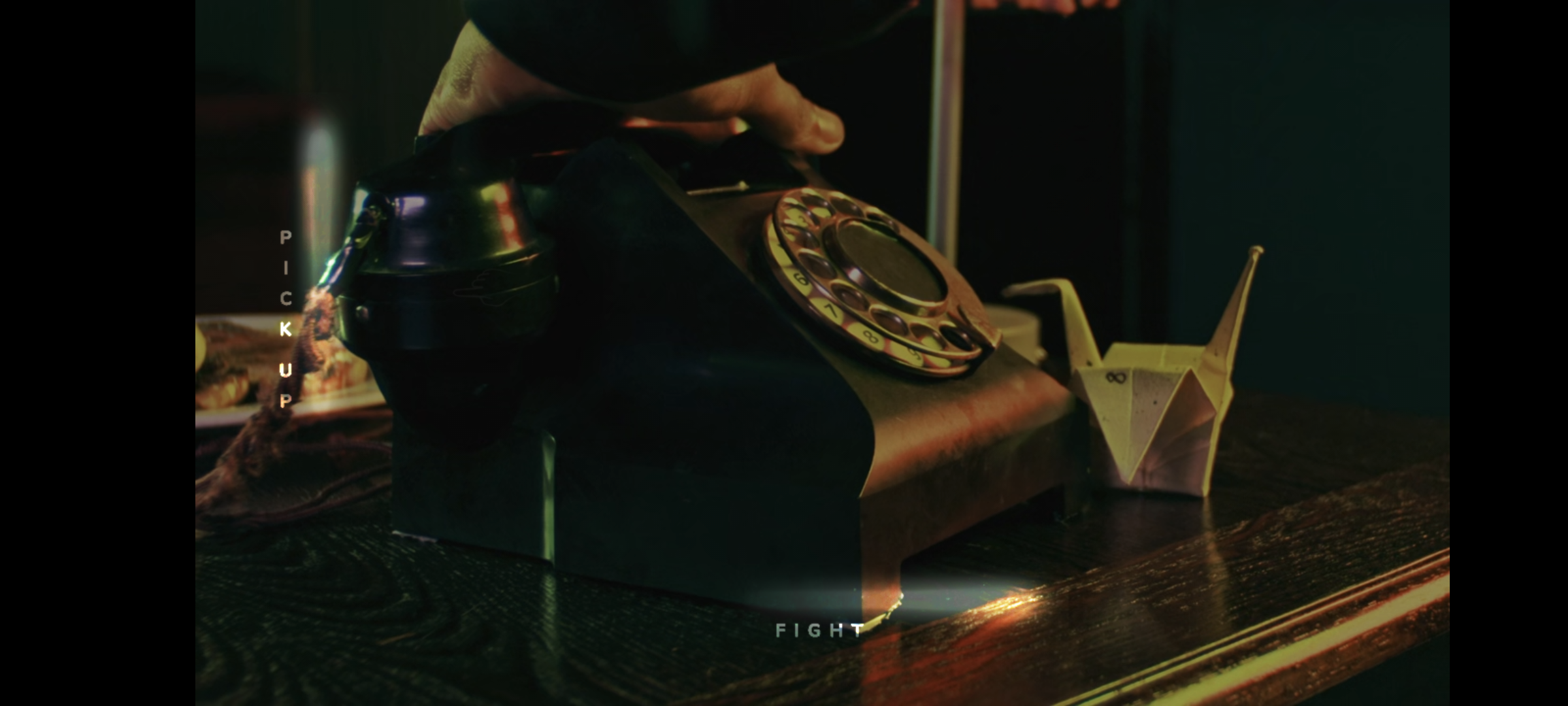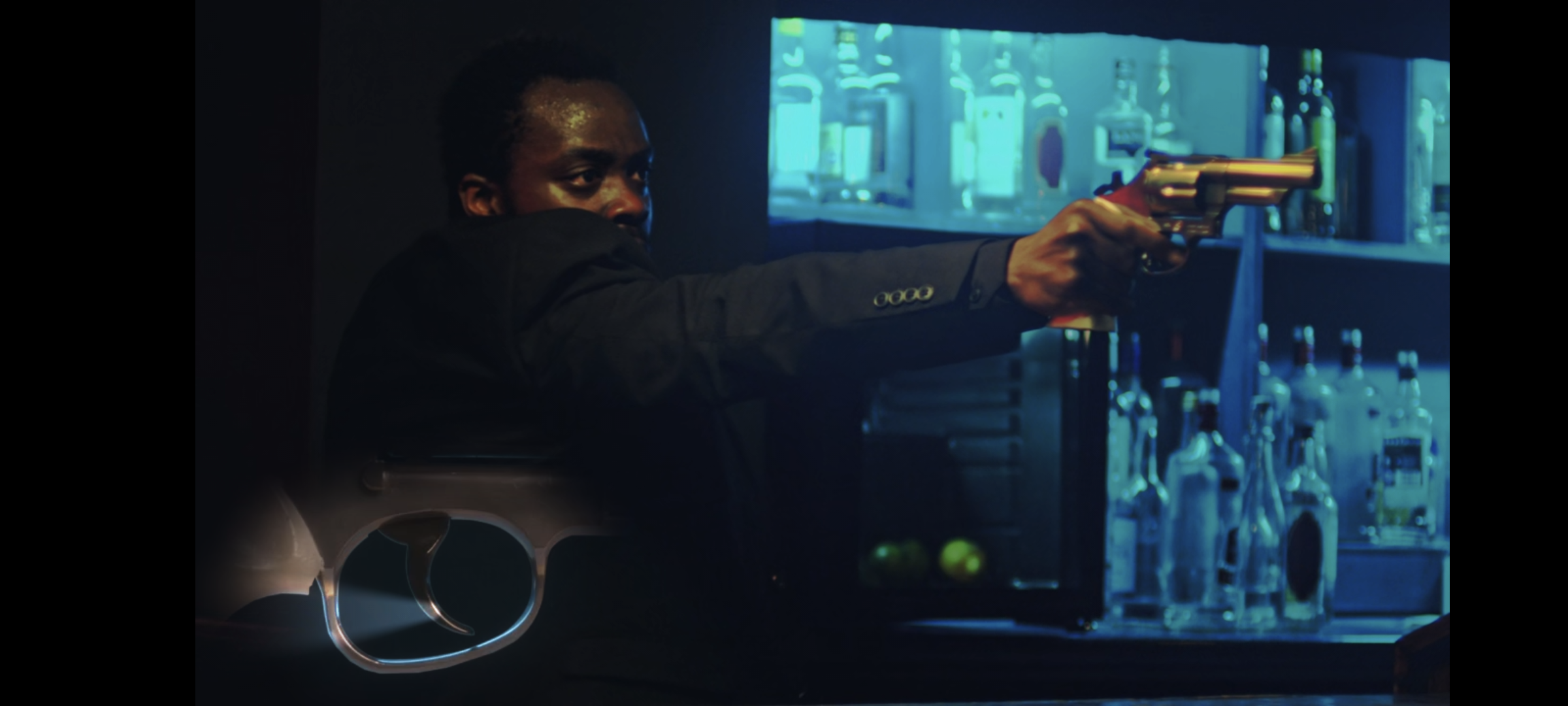Hush - Crane is pretty short, around 20 minutes or so, and is very similar in many ways to Erica - a movie-like game you can touch to interact with, and a game I really liked. Hush - Crane follows a kind of hitman, or gangster - someone working for an underworld organised gang - who ends up tangled in a love affair with someone who’s not all they seem. What you see is live-action, as if you’re watching a film. But the game constantly wants your tactile involvement, be it using two thumbs to slide straps off of a lady’s shoulders, or a finger to pull back the trigger of a gun. You can flip tables, smash bottles over people’s heads, and very little of it needs any explanation - it just feels intuitive and right. And since it’s a kind of multi-path experience you can play it a few times to see different outcomes from different decisions. It’s pretty good. It’s slick like Erica, it’s well shot and well acted, and while a few things don’t quite land, the overall feeling is of something of a high standard. But is that it? It’s been three years since Erica came out, and a year since I told Flavourworks’ story and was shown a pretty sizable chunk of the same game. And though I appreciate it took time to adapt the proprietary TouchVideo tech for new platforms, a 20-minute experience in all that time seems slim. In truth, Hush - Crane feels more like a teaser - it even teases more to come. And that’s because, as I come to discover, it is. This is a pilot episode, according to Flavourworks co-founder Jack Attridge and new CEO Zack Slatter, who I talk to after playing the game. And it will be just one part of a larger anthology of games that will make up the Hush experience. So “Hush”, then, is the name of the anthology, while “Crane” is the name of the individual game. The aim is to have seven games in the first anthology, which will take place over the course of one night in one city, which is a nice angle. These games won’t tell one continuous story, like chapters in a book, but rather collectively explore something from different perspectives. And though they won’t directly overlap, you will potentially feel “echoes” - as Attridge calls them - of other stories while you play. Let’s say a main character dies in one game: you may see that reflected in a news announcement in a different game. The length of the episodes will vary but the aim is to keep them shorter than Erica - a lot shorter - which was a couple of hours long. The average playtime in one sitting for Erica was apparently 45 minutes, which means most people had to break the game in two to finish it. Flavourworks doesn’t want that to happen again but for you to finish in one go - I suppose like how you would a shorter episode on a subscription TV service, which is something they talk often about, as if that’s the guiding principle here. “Snacks”, they call the episodes. And if you want to “gorge”, simply chain a few in a row. But the big question in all of this is when? When will this anthology be ready? And the answer is: they don’t know. The crucial missing ingredient is a publisher, which is what they hope a pilot episode to convince, and they’re apparently in talks now. Should all go well, they reckon it will take a year to get the anthology made. They’ve already scripted “a number” of episodes and they’d film them all in one whack which, incidentally, is the expensive bit. Another big question is what does this mean for consoles? I really missed the big TV experience while playing Hush - Crane on my phone. It doesn’t feel as cinematic on a handheld device, and it’s a shame given the cinematic nature of the beast. But never fear. “We definitely want to be on the big screen,” Slatter says. The TouchVideo tech already works on PlayStation and Steam, “and we’re building that out to more platforms as we speak - even some somewhat surprising ones you wouldn’t think of”, Attridge adds. VR, maybe? Playdate? That would certainly be surprising. Attridge continues: “Part of that is allowing people to have the living room experience which we found Erica was wonderful for, because you didn’t need to be paying the game to enjoy it. It’s not like you’re sitting here watching someone’s inventory: every frame on screen has to look so good that you don’t mind not playing it.” It does feel nice to control on a phone, though, and Flavourworks is looking at “the connected TV ecosystem”, so maybe multiple devices will be an option. That’s Hush - Crane, then, but it’s not all Flavourworks is working on. The studio recently announced a partnership with Viola Davis’ production company JuVee to make an interactive experience called Lucid, a feature-length, live-action whodunnit. And there’s vague talk of other internally generated live-action experiences in every film genre you can think of. For instance, Attridge has a shoot coming up in eight weeks for a more lighthearted experience, and it may well be out before the Hush anthology is released. But all they can say about it is “it’s a new commission from a new partner” (Slatter’s words), but it builds the overall picture that Flavourworks, a studio of 25 people now - up from the six that made Erica - has fingers in many pies. In addition to that, there’s some intriguing talk of using the tech to help “IP owners” open their brands to wider audiences. “Yeah, it’s hard to talk [about],” Attridge says. “It’s a bit early. Put it this way: if you have a really great narrative game and it has an upcoming TV show, and millions of new people go and watch that show, and they want to check out the source material but they don’t want to spend $500 on the new machines that they might not be able to get ahold of anyway…” Sounds quite a lot like The Last of Us TV show, doesn’t it? “… And even if they do, they will not have that gamer instinct to be able to actually play through the game because of the high skill-level, complex controls. And they don’t have the bandwidth that can fit the demand of cloud-streaming, which also can’t be played offline and can’t deal with the controls. Then maybe there’s another way using TouchVideo to bring a reimagining of that interactive experience to their pocket.” “In all instances,” Slatter adds, “TouchVideo is about providing intuitive accessible gameplay, and that can be for original cinematic content but it could equally be for new versions of more complicated console games.” “I think to simplify it,” Slatter says, helpfully: “our vision of what we could do with TouchVideo is kind of growing and expanding. We are completely dedicated to cinematic games and making new experiences and different genres like you identified. We’ve also got one eye on the future in terms of how do we bring more games to more people, and how can TouchVideo play a role.” It’ll be interesting to see what comes out.


